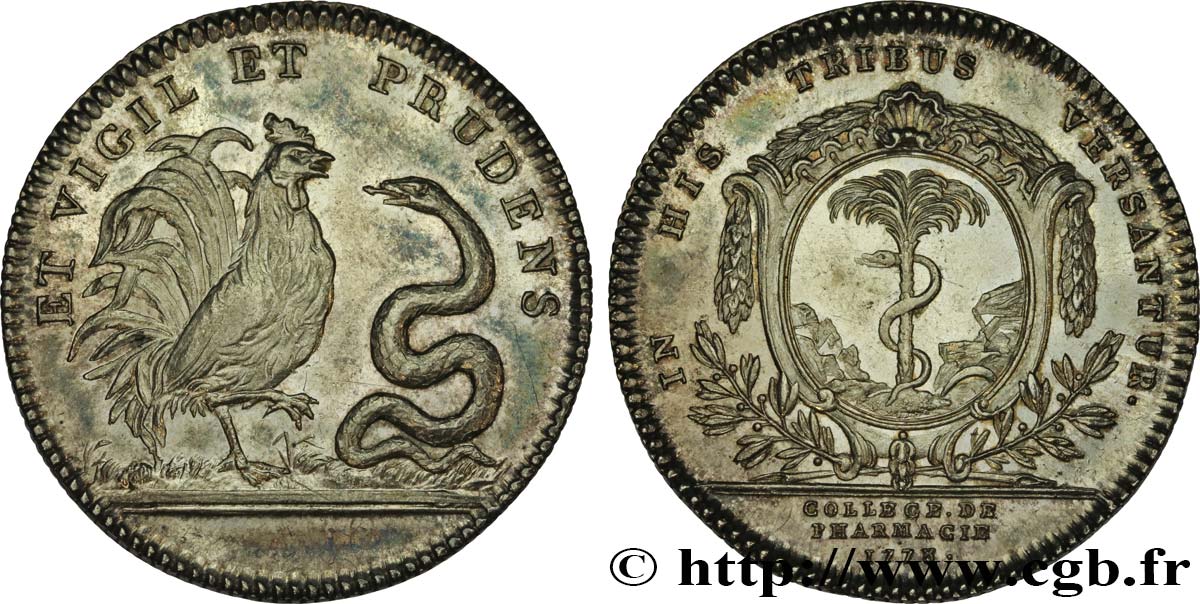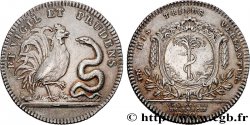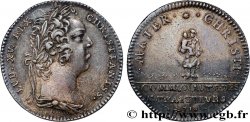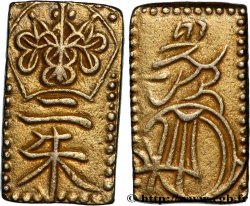Live auction - fjt_477872 - CORPORATIONS COLLEGE DE PHARMACIE 1778
You must signin and be an approved bidder to bid, LOGIN TO BID. Accounts are subject to approval and the approval process takes place within 48 hours. Do not wait until the day a sale closes to register. Clicking on "BID" constitutes acceptance of the terms of use of cgb.fr private live auctions.
Bids must be placed in whole Euro amounts only. The sale will start closing at the time stated on the item description; any bids received at the site after the closing time will not be executed. Transmission times may vary and bids could be rejected if you wait until the last second. For further information check the Live auction FAQ
All winning bids are subject to a 18% buyer’s fee.
All winning bids are subject to a 18% buyer’s fee.
| Estimate : | 150 € |
| Price : | 75 € |
| Maximum bid : | 100 € |
| End of the sale : | 10 April 2018 17:23:11 |
| bidders : | 1 bidder |
Type : COLLEGE DE PHARMACIE
Date: 1778
Metal : silver
Diameter : 32 mm
Orientation dies : 6 h.
Weight : 10 g.
Edge : cannelée
Catalogue references :
F.4758 - Dillemann 10
Obverse
Obverse legend : ET VIGIL ET PRUDENS.
Obverse description : Un serpent et un coq affrontés, symboles du savoir et de la vigilance.
Obverse translation : Aussi vigilant que prudent.
Reverse
Reverse legend : IN HIS. TRIBUS VERSANTUR ; À L'EXERGUE : COLLEGE. DE PHARMACIE. 1778.
Reverse description : Un palmier autour duquel s'enroule un serpent, formant un caducée.
Reverse translation : Ils sont versés dans les trois règnes.
Commentary
Feuardent pose problème pour ce jeton : il donne une année erronée, 1775 au lieu de 1778, et semble considérer que tous les jetons de ce type sont des refrappes. Notre exemplaire présente pourtant toutes les caractéristiques d'une frappe originale mais certainement pas effectuée en 1778. En effet, les frappes en bronze présentent les mêmes caractéristiques techniques et ont aussi la tranche cannelée, ce qui ne se conçoit pas pour le bronze à l'époque. Le motif du serpent et du coq remplace l'effigie royale probablement dès 1796, année plausible pour cette émission.








 Report a mistake
Report a mistake Print the page
Print the page Share my selection
Share my selection Ask a question
Ask a question Consign / sell
Consign / sell
 Full data
Full data















